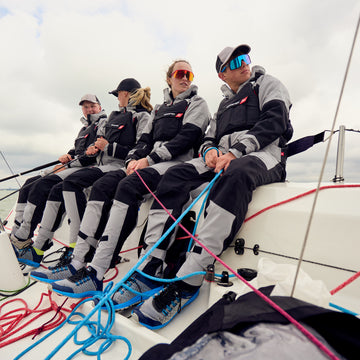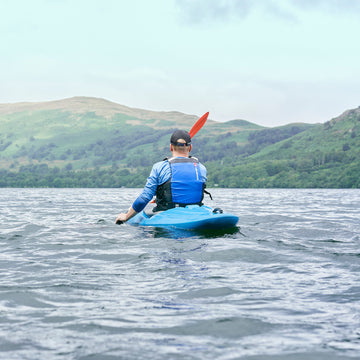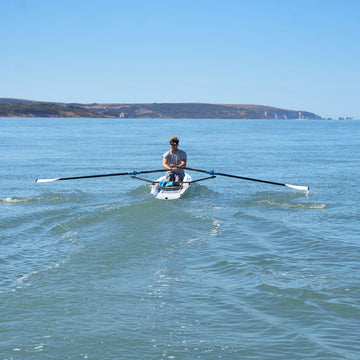Here is my checklist for when the season starts and I lift the cover off the boat - usually too late!
- Toe straps - I check my toe straps for signs of wear, the toe strap fixings and rope attachments.
- Spars - Look over your rivets and fittings for any signs of wear. If there are any wobbly fittings then it's time to change the rivet. You might also like to check the related blog on helpful hints on Riveting. Don't forget to use some Duralac to help stop the corrosion that occurs between dissimilar metals and please use a 4.8mm drill bit not a 5mm drill bit. We stock a wide range of Holt, Allen, Ronstan, Superspars and Selden spars and fittings. Check your shrouds and halyards for signs of wear and make sure your halyard tails are remade so you don't loose your jib halyard on your first hoist. If you have a rope halyard - I can't recommend Halitec enough if you want a non stretch, durable 4mm easy cleat halyard. If you use a 2:1 halyard, you might like to check that the termination at the top of the mast is smooth with no sharp edges and move your knot ready for the season. We tend to supply Halitec main halyards that are very generous, so you can move the wear position throughout the season - just to be sure.
- Sails - simple tears in the body of your sails can be repaired with sail or spinnaker repair tape, but for bolt rope issues and tears in your loaded areas, you will need to take it to your local sailmaker.
- Rope - you might like to wash your ropes to rejuvenate them, but if you are using Polilite® sheets, remember that the outer braid is the load bearer, so changing them annually on high wear sheets is recommended. If your sheets are not running well, you should ensure that the blocks that they run through are at least 4 times the diameter of the rope. Check over your primary load lines. You might like to get some top tips on how to do some splicing - check out our how to video tips on this. Control lines that have gone flat and are showing signs of wear can either be end for ended to improve their longevity, or changed. If you are keen to do some continuous control lines, we have the video so you know the secrets.
- Blocks - if they are not working too well, they might just need some soapy water and some lubrication to get them working as good as new, but if they are looking dodgy and need changing, we can help.
- Cleats - even after some lubrication you might have some issues with your cleat holding lines. They might be over tightened or the return spring may need adjusting. If your jaws are worn flat, a needle file can put the bite back into them, or you might just need to replace them.
- Trailers - an annual check and service is advisable and we have entire blog post dedicated to the job.
- Hull - Check over the outside for any nicks that can be easily repaired with your gelcoat/catalyst mix. You should be able to get your colour from the boat manufacturer. The best polishing compound to bring up the finish after you have used wet and dry paper is Farcela, followed by an environmentally friendly hull polish.
- Foils - the finish on these is much more important than the hull. Check out our blog on an epoxy foil repair. When you have finished your A1 job, don't forget to wrap them up in a decent Foil Bag when travelling.
- Rudder Stock and Tiller - Your tiller extension joint is likely to be perished - I think we stock every type at Rooster! I tend not to use the rope cored versions as I don't have faith in them. Once they have see through rubber, my feeling is that the UV degrades the rubber quicker. I recently changed my RWO black standard joint on my tiller extension that I put on before the 1995 Olympic trials - it was starting to look perished! If you are confused about how to attach your joint to your tiller, our video should help. Rooster Carbon Tiller extensions make changing the joint a 3 minute job and are a bullet proof option - but we also stock aluminium ones as well if you prefer. Your rudder stock is a vital piece of equipment. I tend to check it for corrosion or cracking. We stock a wide range of rudder accessories from wing nuts, gudgeons and pintles for both the boat and your stock.
Feel free to comment below with your boat prep successes and failures! Happy Preparation, Steve











 Select Store
Select Store
 EU
EU
 US
US

